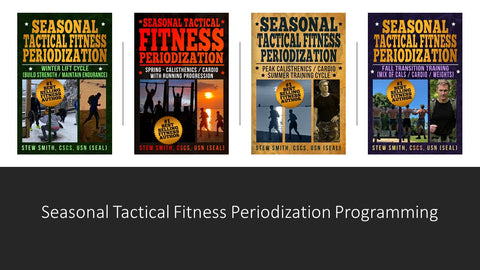Preparing to Serve in the Military, Police, Fire Fighter Services as a Teenager
Many of us knew we wanted to serve our country in the military or our community in the police or fire services when we were young. For many, this desire starts early and keep growing each year. One of my favorite emails to receive is from an early teenage boy or girl asking for advice on what to training to get ready to prepare for service. Here is a list of my advice from training, activities to do, and general adolescent growth guidance to get through your teens able and ready to serve when it is time.

Play Organized or Neighborhood sports - Get out and stay physically active as much as you can. Whether you play sports or just run, bike, skate around it does not really matter - just get moving and keep moving. If you want to add in calisthenics (pushups, pullups, squats, lunges, plank poses, etc) on a split routine where you do an upper body day, a lower body day, and a sports only day - You can add is running some after the resistance session as well. This every other day split routine will allow for your muscles to recover and not risk overuse aches and pains in your joints that typically occur when people do high rep calisthenics daily.

Sports, Activities, School, Work - I remember when I was 13, I knew I wanted to serve one day, but I focused more on sports and doing well in school first. Then I also worked part time doing manual labor jobs - newspaper delivery, lawn mowing neighbors yards, and when I got big enough, I was able to work on a local farm picking up and throwing water melons into a truck (16+ yrs old). In other words, don't get caught up so much on preparing to serve, that you miss out on group activities, team sports, and just good old-fashioned work. If you really want to prepare your self for these jobs - these core activities build an excellent foundation.

Team Activities - Whether it is through sports, clubs, band, or theater, you can get experience working with others as a team / group effort. Obviously, if you are seeking challenging tactical jobs in your future, you will want to add in significant training or manual labor activities to your day if you are not training for sports or in sports seasons. The main reason we say - PLAY SPORTS - is it offers the opportunity to workout hard, train specifically for team / personal goals, and have a common mission with others. The other activities can offer the same team values you need but not so much the physical training and created durability / mental toughness that goes with sports.
Personally, Learn to be a team player. I cannot emphasize this enough as it requires experience and an understanding of being part of a team. Knowing how to work toward a goal whether that goal is to drive a ball down the field or to train for an event with other team members is important to your future. When I was young I played five sports, did a school play, was in service clubs. I was never exceptional in anything, but good enough to be part of a a team. I even made team captain and had a few leadership roles in clubs when I became a senior in high school. I truly feel that my training for these sports enabled me to understand what it means to work hard toward a goal and be a better leader and follower.
Get Some Leadership Skills - Whether you are a team captain, class president, or head of a club or community service group - all of these skills will help you understand what it means to lead and to follow orders. Being a good leader is important, but being a good listener and able to follow rules and other leaders is just as important. Leading the way with your friends in important and you can practice this daily. When someone has a "great idea" to do something dangerous, stupid, or illegal, stand up and get your friends to change their path. Plus, it is difficult to get criminal (even juvenile) records cleaned before joining the military. It may prevent you from serving.
You may find opportunities in JROTC programs, Sea Cadets, Civil Air Corps, and the Young Marines. Sea Cadets and Young Marines Civil Air Corps for military style training and leadership / followership opportunities that you enjoy.
Study Hard and Stay Out of Trouble - Don't be stupid. Make sure you graduate high school, perhaps get some college (good but not necessary), and study a foreign language. But also know how to speak and write in English as you will be writing and presenting often in the tactical professions. Any foreign language is fine at this level in high school as it is more understanding how languages and other cultures work that will help you with more important languages later (Chinese, Russian, Arabic, etc). Also understand Algebra and Science, as you will see this math and physics in Military Dive Training / shooting.
*NOTE - Do I even need to say stay away from drugs and alcohol as it has no purpose in this training. Do not get a criminal record or DUI / DWI!
I have seen many kids have a record and not get accepted. Due to the large amount of applicants some units within the tactical professions can be very selective. (Special Ops, special programs, etc)
Transition from Sports to Tactical Fitness - This process may take extra time too. Just because you played three sports in high school does not mean you are specifically ready for your next selection challenge in the tactical professions.
Also realize getting GOOD at everything is a requirement for tactical fitness - however getting great at a few elements of fitness is required to make sports teams. So rounding out your abilities as you transition out of sports and into the tactical professions must also be realized. You now have to get good at strength / power, speed / ability, endurance / muscle stamina, grip, and flexibility / mobility as pictured below:
We All Grow At Different Rates.
I was done with height and muscle mass growth at 18 years old and started early at age 13 with extra workouts outside of sports. I still had issues putting on muscle (hard gainer), but compared to other kids in my age group, I was moving pretty fast but they all caught up to me by age 19-20. Together with finishing growing, athletic history, and focusing on improving any weaknesses that will be exposed in tactical fitness training programs, you will be good to go.
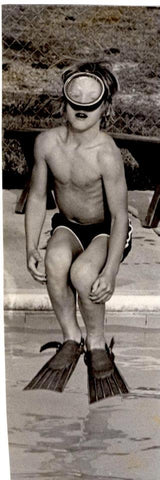

Finally - Make Sure You Are Grown (or finished growing before you join) - Especially if you want to go in spec ops selection programs, you are going to need to not only be prepared physically with training, but being done with puberty is also helpful. There is a big difference between a person from ages 18-22 - especially young men as they tend to keep growing into their early 20's. If you are a late bloomer, do not be in a rush to join the military. Get on a lifting program late in high school and you may hit a growth spurt at the same time as lifting and see big results in size and performance. But THEN - get on specific training programs for your goals about a year out from when you want to join.
When you are still growing, your legs, arms, spine are stretching muscles / tendons and your bones are still soft. It takes a few years to make up the lost flexibility / mobility from quick rates of growth. It also takes a few years to add in mass to help support the new height you created for yourself. The added mass you gain from strength training / eating BIG, will help you become more durable during future training programs found in the tactical professions. But, your daily work habits, physical activities, and ability to work well with others (team sports) will be the foundation of your success in this journey. You are training for future service and may not even know it yet.
If You Want to Go Into Special Ops Programs - Check out the Pipeline of Training Options below:
Here's the answer for solving this issue with What Every Special Ops candidate Needs to Know once and for all. If you're a Special ops candidate and still have questions, this an article every spec ops candidate should read - and start your journey TODAY! Get all the FREE details here. This Spec Ops Candidate article link gives proven path of advice on training preparation to crush the PT test without failure to get TO the training as well as how to get THROUGH the training pipeline without wasting your time not seeing results.
The Pipeline of Training Options:
Start off with calisthenics and work your way up to high reps, weights, running, swimming, etc...
Training is What We Do:
Need Programming for Fitness Tests and Beyond? We are all about getting you TO and THROUGH your future training program. See how that works.
There is More To StewSmithFitness.com than You May Know
(In fact, there are more than 40 books, 1000+ articles, online coaching - and more)
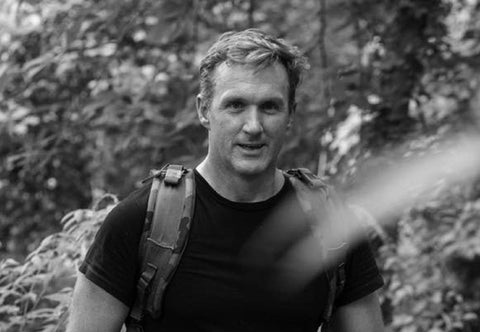
Who is Stew Smith CSCS? Coach, Trainer, Writer, Podcaster: I'm the former Navy SEAL that tactical candidates go to for books, ebooks and online coaching to prepare themselves to get to and through intense tactical assessment and selection programs and qualify for service in their chosen tactical profession. See More at StewSmithFitness.com
Where to Find More Information About Optimal Performance Training Programs
When you start training again, consider the seasonal tactical fitness model. I call it A WAY to train and obviously not the only way to train. But it offers the opportunity to never neglect your weaknesses, helps with flexibility and mobility, but will also put you at a level of physical abilities where you are happy with your overall ability to do just about anything. We have a system where the seasons dictate our training. When it is nicer outside, we tend to run and do more calisthenics. When it is colder and not so nice, we lift more, run less, and still maintain our outdoor activities with shorter runs and rucks. Check it out: Seasonal Tactical Fitness Periodization System.
These Seasonal Tactical Fitness BLOCK Periodization programs will walk you through 4 x 4 weeks cycles with 16 weeks of each season in two programs. (32 total weeks)

Increase Strength & Crush the PST / PAST
3 Weeks Strength - 1 Week PT / Cardio Focus
(16 weeks)
These programs will walk you through 4 cycles with 12 weeks of each season in two programs.
The Specific Military / Special Ops Physical Fitness Workouts
Navy SEAL Workout Phase 1
Navy SEAL Workout Phase 2 - 3
Navy SEAL Workout Phase 4 Grinder PT
Navy SWCC Workout
Army / Air Force Advanced Fitness / Special Ops
Army PFT Workout (Prep For Rucking, OPAT, ACFT)
Army Special Forces / Ranger Workout
Army Air Assault School Workout
Army Airborne Workout
Air Force Special Warfare IFT / OFT / Selection Prep


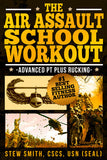
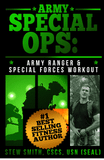


Advanced Running Program - Special Ops Supplement Plan
USMC RECON / MarSOC Workout
USMC OCS / TBS Workout
USMC IST and PFT
The Combat Conditioning Workout
Air Force PJ / CCT Workout Battlefield Airman Prep Course
The UBRR Upper Body Round Robin Workout / Spec Ops version
The Coast Guard Rescue Swimmer / Navy SAR Workout
The Service Academy Workout (West Point, Navy, Air Force Academy)
The Navy, Air Force, Marine Corp Boot Camp Workout
The Law Enforcement Physical Fitness Workouts
The FBI Academy Workout | FBI Workout Vol 2
The DEA Workout
The FLETC Workout - Ace the PEB
The PFT Bible: Pushups, Sit-ups, 1.5 Mile Run
The Fire Fighter Workout - Ace the CPAT
Online Coaching Options
Online PT CLUB - Weekly Workouts created personally for you.
New Member's Only Content / Services Program!
If you want access to years worth of workouts, many of the top eBOOKs, favorite workouts of the week, free fitness APP, closed Facebook Group, video / picture library of exercises, and more access to LIVE Q/A sessions check out the Stew Smith Fitness Members Section.
The dashboard below has the links to all the information, archives, videos, and links to workouts, podcasts, live Q and A lessons.
Consider this! - A Membership Program and Gain Access to Exclusive Content
(click for Fitness Club Dashboard - members only)
Questions? Just email - Stew@StewSmith.com
At StewSmith.com - List of Products and Services
- FREE Articles
- Podcasts and Swimming Videos (Youtube, TikTok, Instagram)
- eBooks
- Books and eBooks in PRINT
- Stew Smith Fitness Club membership site
- Online Coaching
Stew Smith Fitness




